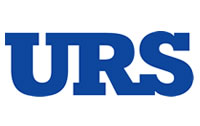There is a connection between leadership training and motivation scores.
Article by Tom Moriarty, PE, CMRP; [email protected]
Published in Plant Servcies Magazine, April 4, 2016
Recall that Expectancy Theory is a method that allows us to assign a relative motivation score. We asked several series of questions to get the respondent’s feelings on several elements. The elements included how the person felt regarding level of effort, performance outcomes, and how important those outcomes were to them. Responses were combined into an equation that calculated a score indicating the individual’s level of motivation. You might also recall that behaviors are triggered by motivation, and motivation is based on individual needs.
I used a Microsoft Excel pivot table and selected the responses from frequency of training relative to the motivation score from the Expectancy Theory calculation. In Figure 1 you can see the categories for frequency of training: “every year or more frequently”, “every couple of years”, “not more than once in five years”, and “never”. The pivot table pulled all responses for average scores for senior managers, managers, and supervisors. (Team member leadership training frequency was not really relevant for this analysis.) Note that as training is more frequent, the motivation scores increase; less training equates to lower motivation.
There is a strong correlation between the frequency with which senior managers, managers, and supervisors receive leadership training and the level of motivation they report. In relation to the average motivation score for leaders of 146.8, the motivation scores for the most frequent training recipients are 8.5% higher than the average. When leadership training is never received, the motivation score is 6.7% below the average motivation score. That means there is a 15.2% difference in motivation score between the most frequent, and never receiving leadership training.
What is that 15.2% difference worth to an organization? If we could determine the value of improving leader motivation 15.2%, or even 1%, the return on investment for leadership training could be determined.
Suppose this survey was done within a single organization. The survey could be structured to associate team member motivation scores to supervisor motivation scores and the frequency of leadership training. This would be a fantastic tool for evaluating the quality of leadership training and for monitoring a leader’s application of leadership skills and tools. We can measure the impact of motivation improvements by trending absenteeism, turnover, recordable safety incidents, and even total cost per unit produced.
If there was little or no improvement in average motivation scores after say three to six months of emphasis, you could conclude that the training was not very effective. If there was an increase in the average motivation scores, but some individual scores did not improve, it may be that those individuals were not committed to improving. Coaching or reassignment might be in order.


















